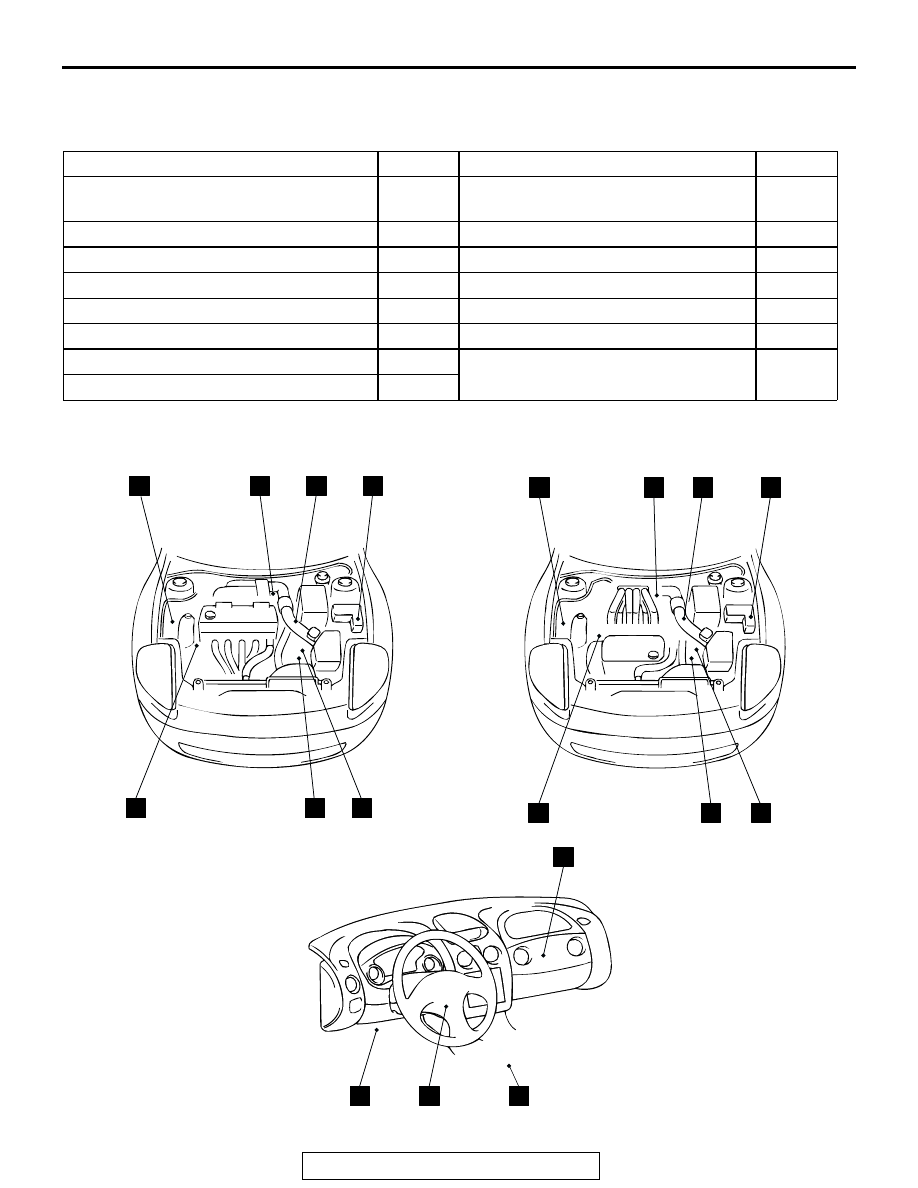Mitsubishi Eclipse. Manual - part 848

ON-VEHICLE SERVICE
TSB Revision
AUTOMATIC TRANSAXLE
23A-401
ON-VEHICLE SERVICE
A/T CONTROL COMPONENT LAYOUT
M1231008600310
NAME
SYMBOL NAME
SYMBOL
A/T control relay
D
Shift switch assembly <Vehicles with
sport mode>
K
Crankshaft position sensor <2.4L Engine> E
Solenoid valves
G
Crankshaft position sensor <3.0L Engine> E
Stoplight switch
I
Data link connector
J
TP sensor <3.0L Engine>
B
Dual pressure switch
A
TP sensor <2.4L Engine>
B
Input shaft speed sensor
C
Transmission fluid temperature sensor G
Output shaft speed sensor
C
Transmission range switch
F
Power train control module (PCM)
H
AC004792
H
I
J
A
B
C
D
E
F
G
E
F
G
A
B
C
<2.4L ENGINE>
<3.0L ENGINE>
D
K
AB